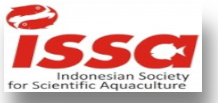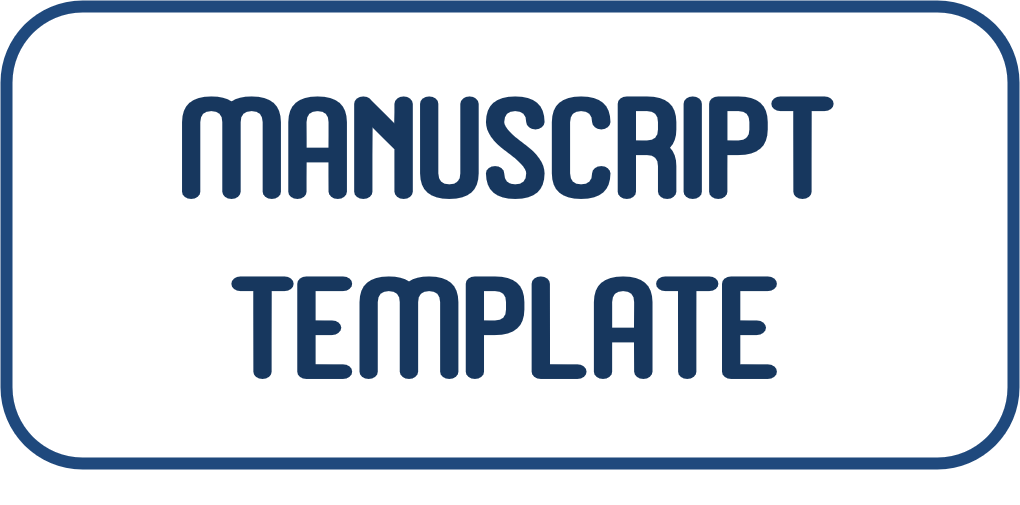The digestibility of biofloc meal from African catfish culture medium as a feed raw material for Pacific white shrimp
Abstract
ABSTRACT
This study was conducted to evaluate the digestibility of biofloc meal collected from catfish culture as a feed raw material for Pacific white shrimp Litopenaeus vannamei diet. A basal feed with 43% crude protein content was used as a control diet and mixed with 2% of binders and 0.5 % of Cr2O3 as a marker for digestibility. The experimental diets were made by mixing 67.5% of the basal diet with 30% of biofloc meal, 2% of binders and 0.5 % of Cr2O3. Nine units of glass tanks (90 cm ×40 cm× 35 cm) filled with 100 L seawater were used as the experimental culture units. White shrimp with an average body weight of 5.61 ± 0.09 g was randomly distributed to each experimental tank at a density of 20 shrimp/tank. The feed was offered at a level of 5% shrimp biomass per day at a frequency of four times a day. The results showed that the dry matter digestibility of feed with 30% biofloc meal in shrimp were similar to that of the reference diet. However, protein and fat digestibility of feed containing biofloc meal were considerably higher than those of the reference diet. Feeding shrimp with 30% biofloc meal diet resulted in higher survival and specific growth rate and lower feed conversion ratio than those of the control. The digestibility of bioflocs dry matter, protein and lipid in Pacific white shrimp obtained in this study were 54.9%, 76.3% and 79.3%, respectively.
Keywords: biofloc, digestibility, catfish, shrimp
ABSTRAK
Penelitian ini dilakukan untuk mengevaluasi kecernaan tepung bioflok yang diambil dari media pemeliharaan ikan lele sebagai bahan pakan udang vaname Litopenaeus vannamei. Pakan yang mengandung kadar protein 43% digunakan sebagai pakan control dan dicampur dengan 2% binder dan 0.5% Cr2O3 sebagai marker untuk kecernaan. Pakan perlakuan dibuat dengan mencampurkan 67.5% pakan control dengan 30% tepung bioflok, 2% binder dan 0.5% Cr2O3. Penelitian menggunakan sembilan unit akuarium (90 cm ×40 cm ×35 cm) yang diisi 100 L air laut. Udang vaname dengan bobot rata-rata 5.61 ± 0.09 g ditebar secara acak pada setiap akuarium perlakuan pada kepadatan 20 ekor/akuarium. Pakan diberikan dengan tingkat pemberian pakan 5% biomassa per hari sebanyak empat kali sehari. Hasil penelitian ini menunjukkan bahwa kecernaan pakan dengan 30% tepung bioflok tidak berbeda nyata dengan pakan acuan. Namun kecernaan protein dan lemak pakan yang mengandung tepung bioflok terlihat lebih tinggi daripada pakan kontrol. Pemberian pakan dengan tepung bioflok sebanyak 30% juga menghasilkan tingkat kelangsungan hidup, laju pertumbuhan spesifik udang dan rasio konversi pakan yang lebih baik daripada udang yang diberi pakan kontrol. Kecernaan bahan, protein dan lemak tepung bioflok pada udang yang didapat dalam penelitian masing-masing adalah 54.9%, 76.3% dan 79.3%.
Kata-kata kunci: bioflok, ikan lele, kecernaan, udang
Downloads
Authors who publish with this journal agree to the following terms:
- Authors retain copyright and grant the journal right of first publication with the work simultaneously licensed under a Creative Commons Attribution License that allows others to share the work with an acknowledgement of the work's authorship and initial publication in this journal.
- Authors are able to enter into separate, additional contractual arrangements for the non-exclusive distribution of the journal's published version of the work (e.g., post it to an institutional repository or publish it in a book), with an acknowledgement of its initial publication in this journal.
- Authors are permitted and encouraged to post their work online
 (e.g., in institutional repositories or on their website) prior to and during the submission process, as it can lead to productive exchanges, as well as earlier and greater citation of published work (See The Effect of Open Access).
(e.g., in institutional repositories or on their website) prior to and during the submission process, as it can lead to productive exchanges, as well as earlier and greater citation of published work (See The Effect of Open Access).






















